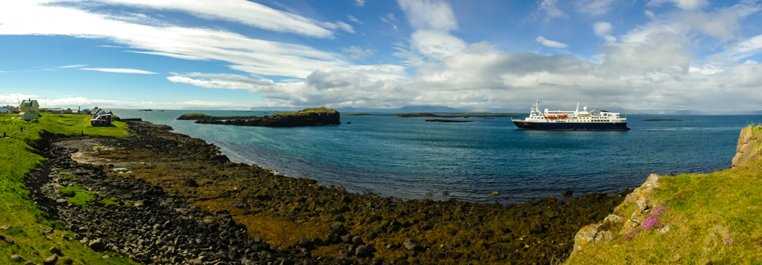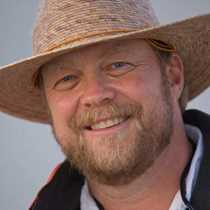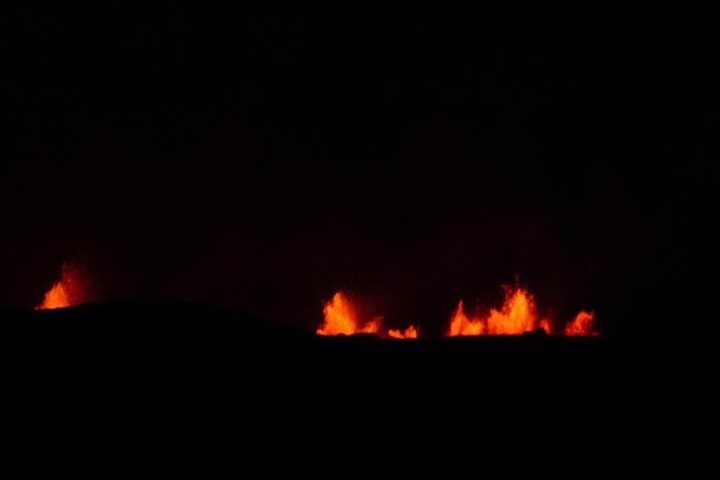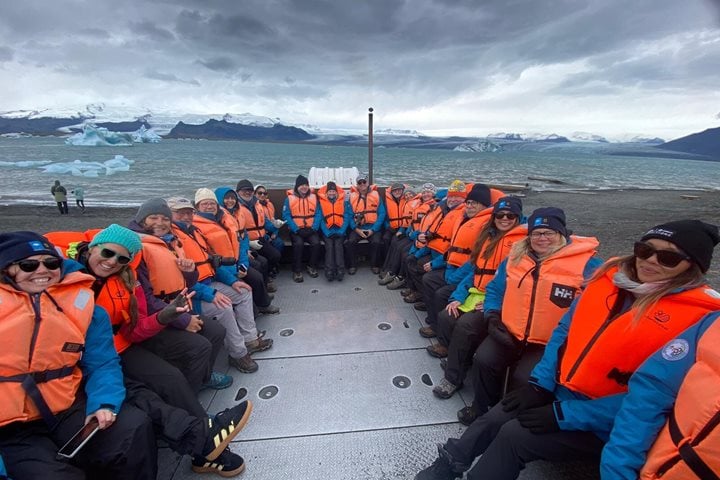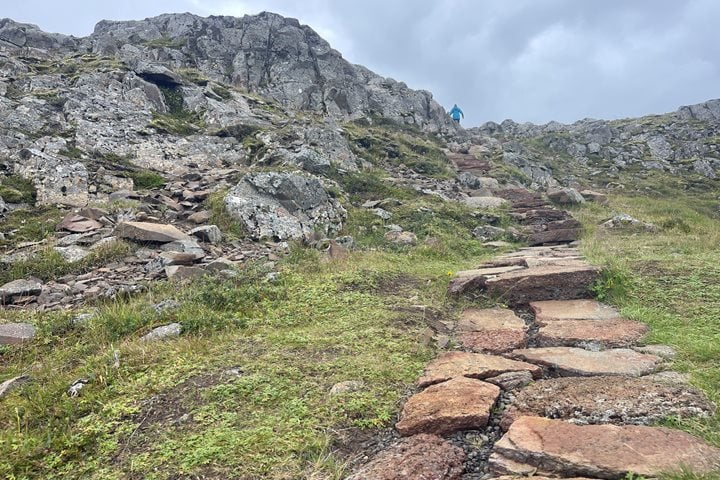Yesterday we had our first taste of the Icelandic landscape on a tour of the hinterland from Reykjavik. We travelled north to the spectacular tear in the island’s surface at Thingvellir, site of the ancient Viking parliament, had lunch in Geysir where the steam geyser Strokkur blows its top every 3-4 minutes, then visited two breathtaking waterfalls at Gulafoss and Flaxi. We completed our circuit via the crumpled black and green volcanic wasteland of the Blue Mountains, arriving with perfect timing at the docks an hour before National Geographic Explorer cast off for our circumnavigation of Iceland.
After sailing north through the night on an unruffled ocean, we woke to a grim prospect: huge black cliffs with their heads in the clouds, and rain showers blowing through from the west. But patience was rewarded: careful watching revealed an ocean full of wildlife: a minke whale across our bow, fulmars tearing at a lion’s-mane jellyfish, and everywhere shoals of small fish puckering the water up ahead. This dramatic headland is Latrabjarg, 40 miles of basalt precipice, a layer cake of lava flows which provides ideal nesting shelves for thousands of seabirds. As the Gulf Stream collides with this headland it stirs up the perfect plankton broth to feed the multitude: everywhere we looked there were guillemots, razorbills, fulmars, kittiwakes and our favorite auk, tiny sea-parrot, the puffin.
As we watched, the clouds raised their hats, the rain moved east and soon the sun was sparkling on the waters, revealing the chestnut bands between each layer of black basalt in the cliffs, green daubs of vegetation on the crags and high up, the whirring clouds of seabirds, like bees swarming at a hive.
The ship turned and headed deeper into the huge inlet of Breidafjordur, 30 miles wide by 70 long. Our afternoon destination was the tiny island of Flatey, a flat green pancake of land barely a mile long, but which in its day was one of the busiest trading sites in the whole of Iceland. Occupied since the first Viking adventurers settled to farm and fish, it was close to the best fishing grounds of the west coast and by the 16th century, one of the most lucrative trading outposts of the Hanseatic League, whose commercial tentacles sought salted cod and paid good money to the hardworking fishermen of the day. It is a quiet, tranquil place now but typical of the tight-knit communities which became the backbone of a modern Norse nation.
We walked, enchanted, over the lush grasslands, amid piping redshanks and drumming snipe, to the bright wooden houses of the summer community. Locals were knitting on their doorsteps or cooking for the day visitors, happy under a blue sky full of swirling marestails. As a final treat, we cruised by Zodiac past trusting puffins and tiny feeding phalaropes, under the nests of dainty kittiwakes on the basalt cliffs, and so back to the ship where the Captain’s Welcome Dinner was waiting to crown a bright, vivid day.

